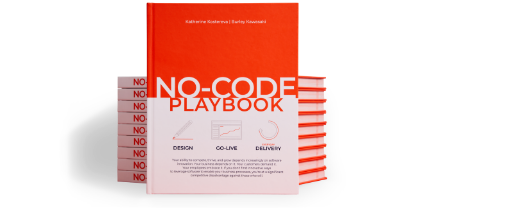Full Guide to Click Funnels

In today's digital marketing landscape, where online competition is fierce and consumer attention spans are ever shorter, businesses must adopt an effective strategy to transform website visitors into loyal customers.
Click funnels provide a structured approach to achieving this goal by guiding prospects through a meticulously crafted journey that addresses their search intent, builds credibility, and ensures high conversion rates.
Discover the difference between click funnels and sales funnels, and learn how to utilise a click funnel to enhance your conversions and sales!
What is a Click Funnel?
A click funnel is a sequence of landing pages designed to lead potential customers towards conversion. It involves a series of steps, from initial engagement to a final conversion event, such as making a purchase or signing up for newsletters. Click funnels are crucial for optimising the lead journey and increasing conversion rate by strategically directing online traffic to pertinent landing pages.
Prospects typically enter click funnels via links in email campaigns, advertisements, or social media posts. These links guide them to specific landing, service, or product pages featuring targeted content and calls to action that encourage leads to convert.
How Does the Click Funnel Work?
A click funnel guides prospects through a series of web pages by strategically placing links that lead them from one page to the next in a pre-designed manner.
Prospects enter the funnel via links and are directed to a landing page with detailed information about a product or service. From there, they can navigate through additional pages featuring more content, up-sells, or cross-sells, ultimately arriving at the conversion page. At this stage, they are encouraged to take action, such as making a purchase or signing up for webinars, email newsletters, gated content, and more.
Differences Between Sales Funnel and Click Funnel
While both sales funnels and click funnels aim to convert prospects into customers, they differ significantly in structure and application.
A sales funnel is a broader concept that encompasses the entire customer journey, from the initial awareness stage to the final purchase, across various channels. An optimal sales funnel includes both online and offline methods, such as in-person meetings, phone calls, and print media.
In contrast, a click funnel focuses specifically on the online journey, guiding potential clients through a sequence of landing pages designed to convert them into clients or sign up for additional content.
Sales funnels encompass multiple steps, including lead generation and nurturing across various touchpoints and interactions. To maximise the effectiveness of a sales funnel, businesses use a combination of CRM systems, and marketing automation tools to manage the customer journey.
Click funnels consist of a series of web pages with clear calls to action, simplifying the customer journey and enabling more direct and measurable outcomes. They often employ specialised software to create, manage, and optimise the funnel process, monitor user behaviour, and make real-time adjustments.
The metrics used to measure success also differ between the two approaches. Sales funnels are evaluated based on metrics as lead quality, sales cycle length, and conversion rate to the next stage in the sales funnel. Click funnels, on the other hand, utilise metrics as click-through rates, page conversions, and overall funnel efficiency.
In essence, a sales funnel provides a thorough overview of the client acquisition and sales process, whereas a click funnel offers a digital-specific approach to driving online conversions.
| Aspect | Sales Funnel | Click Funnel |
Purpose
| Encompasses the complete customer journey across diverse channels, from awareness to transaction | Centres on an online journey through web pages, aiming to increase click-through and conversion rates |
| Steps | Involves multiple stages across different channels and touchpoints | Features streamlined landing pages with explicit calls to action |
| Tools | Utilises CRM systems, marketing automation, and other marketing tools | Utilises specialised software to monitor click funnel |
| Metrics | Evaluates lead quality, sales cycle length, and conversion rates | Includes click-through rates, page conversions, and overall funnel efficiency |
Click Funnel Example
In this section of the article, we will analyse a click funnel example for an online fashion store specialising in premium clothing:
Picture a scenario where a prospective customer discovers a social media post featuring a paid advertisement showcasing the latest collection of luxury dresses. They click on the advertisement, which redirects them to a category landing page displaying all the dresses available in the shop.
As they browse, they discover a perfect dress for an upcoming wedding and click on it, leading them to a product landing page. This landing page features high-quality images, detailed descriptions, and reviews to assist them in making an informed decision.
After adding a dress to their basket, they are presented with an additional section, showcasing matching accessories such as shoes, jewellery, and handbags that complement the dress. They browse the accessories category page and select a few items to complete their ensemble. While considering accessories, they notice a special offer: receive 10% off the total purchase when buying two or more items from the collection.
Encouraged by the discount, the customer completes their purchase of the dress and matching accessories. Following the purchase, they receive a thank-you email, along with an invitation to participate in customer loyalty programs or upcoming sales events. This approach ensures a positive experience and encourages the customer to maintain a connection with the brand.
This example illustrates how a well-planned sequence of steps can guide customers through the online shopping journey, prompting them to explore complementary items, increase their order value through discounts, and foster ongoing engagement.
How to Create a Click Funnel
Developing click funnels requires a structured approach to guide lead potential customers through a series of steps crafted to convert them into clients. This method is crucial for enhancing online marketing efforts and maximising sales.
Step 1. Define your goal and target audience
Before embarking on creating a click funnel, it's crucial to clearly define your specific goal and identify your target audience. Your objective might involve generating leads, selling a product or service, increasing webinar sign-ups, another desired outcome.
Understanding your audience - their demographics, interests, pain points, and buying behaviour - will enable you to tailor your marketing strategy and funnel content to meet their needs and motivations effectively. This approach allows you to craft a more personalised and compelling experience that resonates with your potential customers, guiding them seamlessly through each stage of your click funnel.
Step 2. Create a compelling landing page
Landing pages form the cornerstone of click funnels. They should be crafted to capture attention, offer pertinent information, and prompt action.
Key elements of a successful landing page include:
- Clear and compelling headline: immediately communicates the value of your proposition.
- Engaging visuals: high-quality images or videos showcasing your product or service to encourage prospects to purchase.
- Concise copy: clearly explain the benefits and features, enabling potential customers to make an informed decision.
- Call to action (CTA): direct visitors to take the next step, such as signing up, making a purchase, or registering for an event.
- Lead capture form: if applicable, includes a form to collect visitor information such as name and email.
Optimising your website for conversions involves A/B testing these elements to determine what resonates best with your audience and drives the highest conversion rates.
Step 3. Implement up-sell and cross-sell strategies
Enhance the potential value of a prospective customer by integrating add-ons such as up-sell and cross-sell tactics into your click funnel.
Up-selling involves encouraging customers to consider purchasing a more expensive or premium version of the product they're interested in. Cross-selling involves suggesting related products or accessories that complement their initial purchase.
Effective strategies include:
- Product bundling: offer a discount when customers buy multiple related products together.
- Limited-time offers: create urgency with time-sensitive deals to encourage immediate action.
- Personalised recommendations: utilise client purchase history or browsing behaviour in targeted marketing to recommend relevant products.
Strategically placing up-sell and cross-sell offers at pertinent points in the sales funnel can increase the average order value and customer satisfaction.
Step 4. Develop a follow-up email sequence
Once prospects enter your funnel by taking the initial action (such as signing up or making a purchase), it's crucial to nurture these leads through a carefully crafted email sequence.
The sequence should aim to provide value and steer leads towards the next stage of the funnel or their subsequent purchase. It's also an effective approach to transform a one-time buyer into a loyal customer by consistently engaging them with personalised offers, relevant content, and outstanding service that reinforces their decision to select your brand.
Step 5. Monitor and optimise
Continuous monitoring and optimisation are essential to the success of your click funnels. Utilise analytics tools to monitor key performance indicators (KPIs) such as conversion rates and click-through rates.
Analyse data to pinpoint bottlenecks or areas for improvement within your funnel and make data-driven decisions to enhance conversions. Regularly review and refine your click funnels to ensure they align with achieving your business objectives.
Creating a click funnel involves strategic planning, meticulous execution, and ongoing optimisation to guide prospects seamlessly from initial interest to conversion. By understanding your audience, crafting compelling content, and harnessing analytical tools, businesses can develop effective click funnels that drive sales and foster customer engagement.
Enhance Your Sales Strategy with Creatio
Businesses can effectively increase conversions, maximise customer lifetime value, and build stronger brand loyalty by strategically guiding prospects through well-designed click funnels. To enhance your efforts, you can utilise Customer Relationship Management (CRM) tools such as Creatio CRM to streamline and optimise the click funnel processes.
Creatio CRM offers robust features designed to manage leads, automate marketing campaigns, track customer interactions, and analyse sales teams’ performance. With its intuitive interface and powerful analytics, Creatio CRM empowers businesses to create personalised customer journeys, enhance sales team collaboration, and drive revenue growth.

By integrating Creatio CRM into the click funnel strategy, you gain deeper insights into customer behaviour, streamline sales processes, and nurture leads more effectively. Implementing click funnels alongside advanced Creatio CRM technology will enable you to develop an effective sales strategy to position your business for long-term growth and success in today’s dynamic digital marketplace.






